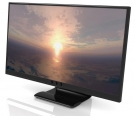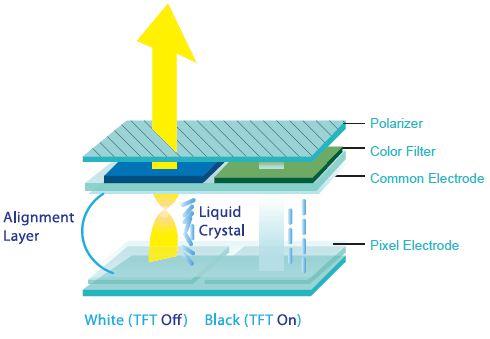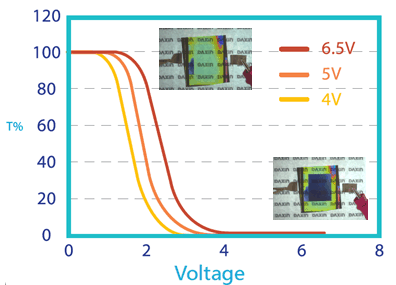Product
LCD Materials
LCD Materials

Liquid Crystal
| Applications |
Liquid crystals have both features of conventional liquids and those of solid crystals. Relying on electro-optical properties, liquid crystals are used widely in the application of tablets, mobile phones, GPS, monitors, displays and even smart windows. To achieve different gray levels between light and dark modes, the amount of backlight that can pass through is controlled by the twisting motion of rod-like liquid crystals.
In a twisted nematic (TN) display, if no voltage is applied between glass substrates and across the liquid crystal molecules, the liquid crystals align themselves with the alignment layer, and polarized backlight can be transmitted through a 90 degree twist; however, as voltage is applied, liquid crystal molecules align themselves parallel to the electrical field, consequently no backlight can be transmitted and thus results in a dark mode image.
Daxin has provided our liquid crystal products to world leading display manufacturers and continuously focuses on developing various kinds of nematic liquid crystal configurations, which further provide properties of high contrast ratios, faster response times, and produce deeper and richer color experiences for LCDs.

| Features |
- Stable Phase Transition Temperature
- Wide Operating Temperature
- Low Threshold Voltage
- Low Electrical Power Consumption
- Fast Response Time, Image Sticking Solution
- Excellent Contrast Ratio, Good Image Quality

| Specifications |
| Product Name | DLC-166 | DLC-135 | DLC-111 | Remarks | |
| Field of Application | Mobile/ Tablet TFT-LCD |
Laptop TFT-LCD |
Monitor TFT-LCD |
||
| Features | Wide Operating Temperature | High Dielectric Anisotropy | High Optical Anisotropy | ||
| Purity | % | > 99.8 | > 99.8 | > 99.8 | |
| Water Content | ppm | < 50 | < 50 | < 50 | |
| Volume Resistivity | Ω.cm | > 1014 | > 1014 | > 1014 | |
| Clearing Point | °C | 87.5 | 73.0 | 76.0 | |
| Optical Anisotropy, Δn | - | 0.100 | 0.112 | 0.124 | At 25°C, 589nm |
| V10 | V | 2.47 | 2.41 | 3.58 | Test cell gap DLC-166:at 4.0um DLC-135:at 3.5um DLC-111:at 3.5um |
| V90 | V | 1.43 | 1.31 | 2.16 | |
| Response Time | msec | 13~14 | 8-9 | 5~6 | |
| Dielectric Anisotropy, Δε | - | 6.6 | 7.2 | 3.7 | At 25°C, 1KHz |



